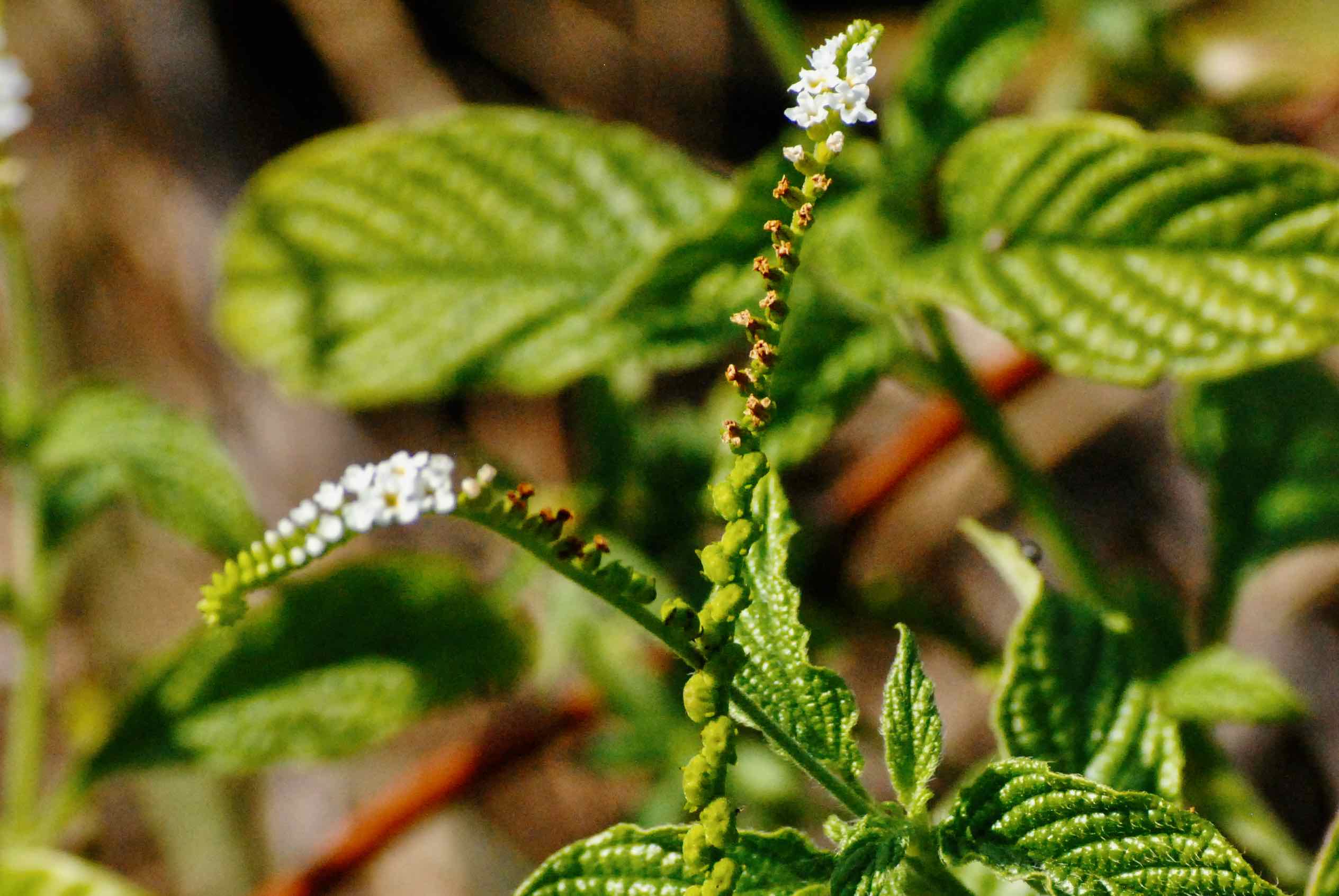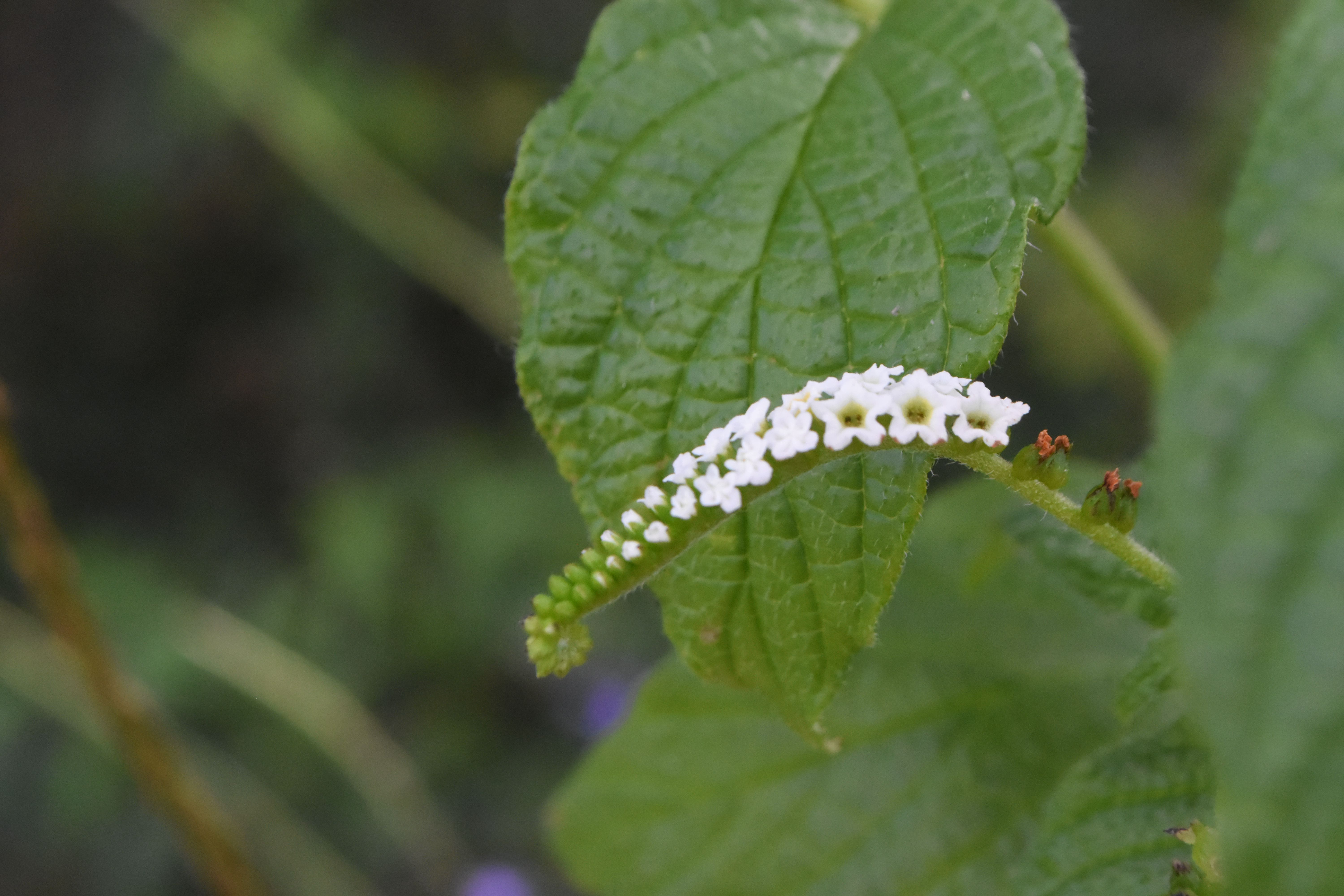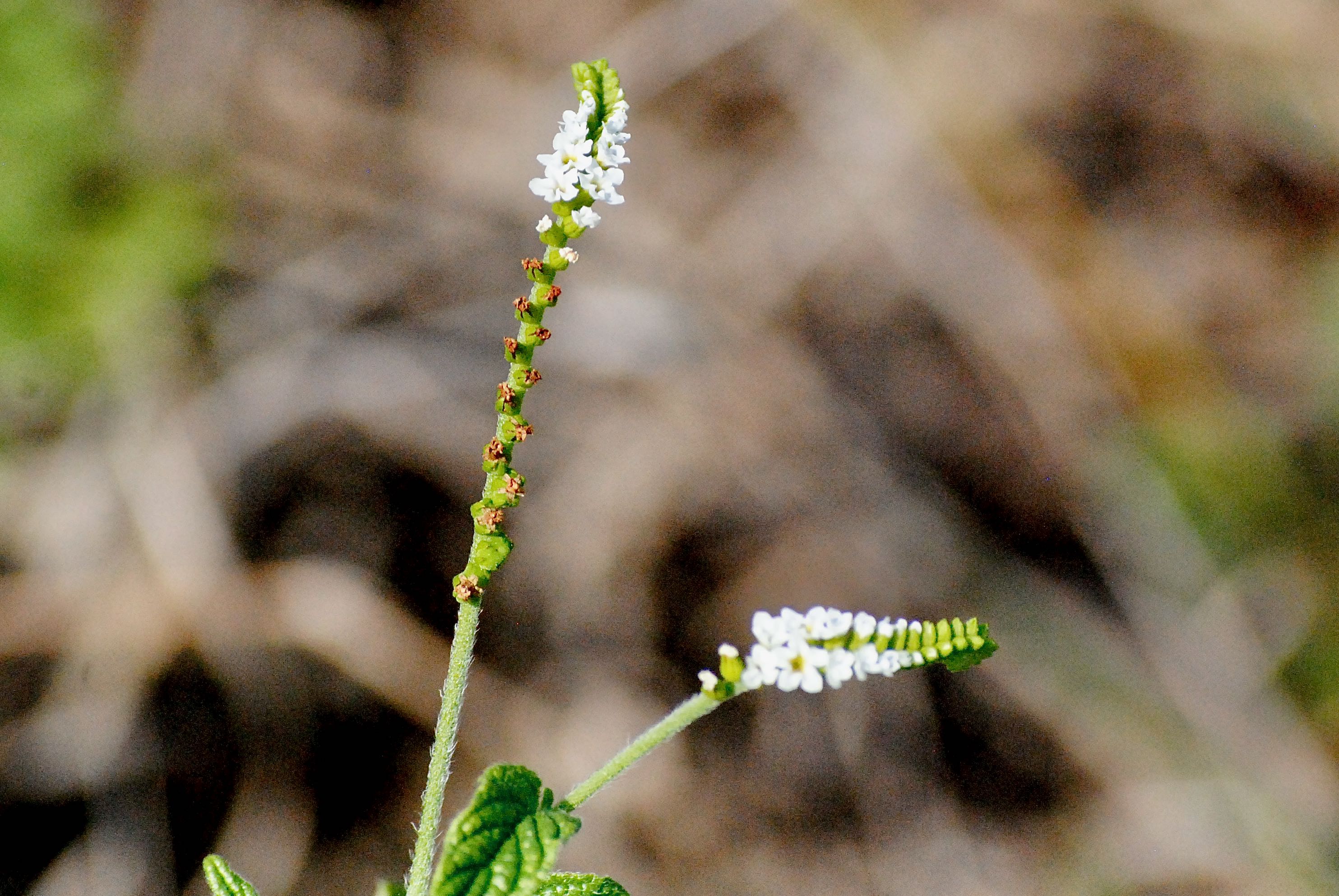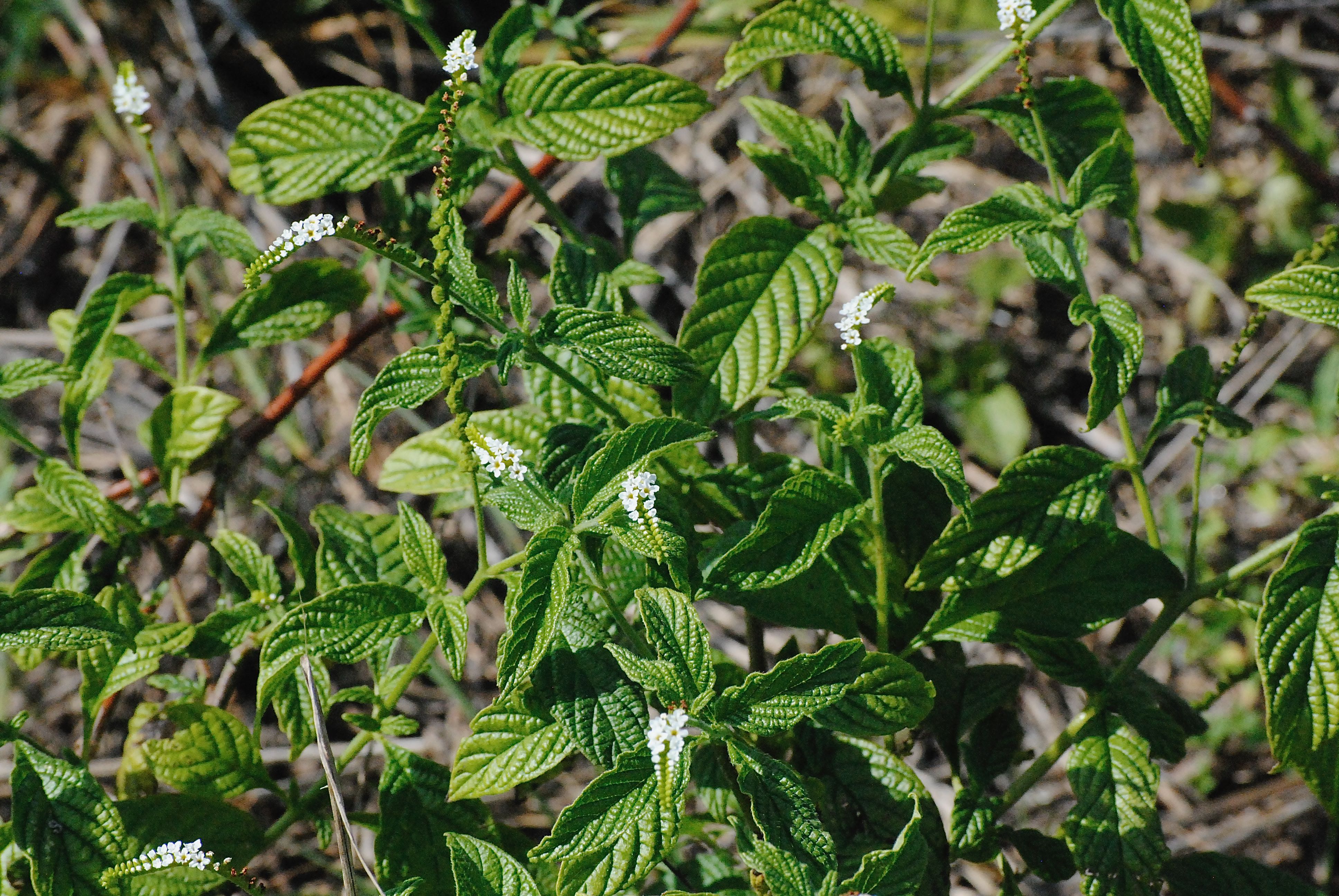
Scorpion's tail, photographed at Pawpaw Natural Area, Palm Beach Gardens, Palm Beach County, in February 2013.
Scorpion’s tail, Heliotropium angiospermum, is a fairly common plant in the wilds of South Florida. But, in our experience, it’s more likely to be seen as an element in a butterfly garden than found growing in the backcountry.
It’s a Florida native that grows mainly in the coastal counties from Volusia County southward on the Atlantic side of the state, and from Pinellas on the Gulf. Hendry County is the one inland exception.
Scorpion’s tail’s native range also extends into southern Texas, the Caribbean, Mexico, Central America, and South America.
Scorpion’s tail is a shrubby plant, sometimes herb-like, sometimes woody, that stands between one and three feet tall, with multiple branches. It can be upright in habit, or leaning over, almost prone. Its most indentifiable feature is its terminal spikes of flowers that inspire the plant’s name.
The flowers themselves are white, with five lobes and a bright yellow center. They are individually small, but line up in two ranks along the spike, which tapers to a point at the end. If indeed the spike resembles a scorpion’s tail, it's one that's upside down. We’ve seen some references who see it more like a lobster tail. In any regard, flowers can appear singly or in pairs. Scorpion’s tail blooms year-round.
Leaves of scorpion’s tail are elliptical in shape, wide at the base, narrowing to a point at the tip. The veining is prominent, giving the leaves a “quilted” look. The leaves are simple and arranged opposite each other along the stem.
Favorite habitats include coastal hammocks and disturbed areas.
As we noted above, scorpion’s tail is commonly used in butterfly gardens. The flowers attract both the Miami blue and Schaus swallowtail butterflies, both extremely rare in South Florida, among others, but no species uses scorpion’s tail as a host plant.
It takes to areas with light shade or full sun, prefers moist soil but can withstand short droughts. It can be grown from seed but some nurseries specializing in native plant do sell the plants. It has a reputation of being easy to grow.
The dried leaves of scorpion’s tail are used in traditional medicine particularly in the Caribbean. It’s used to treat a variety of skin ailments, sores, burns and bites, and to clean the skin of new-borns, to stimulate menstruation and induce abortions, to treat gout and as a anti-inflammatory.
There has been some research into the medicinal properties of Heliotropium species in general but nothing that we could find specifically on our guy, scorpion’s tail.
Scorpion’s tail, also spelled scorpionstail and scorpions-tail, is a member of Boraginaceae, the forget-me-not family.



